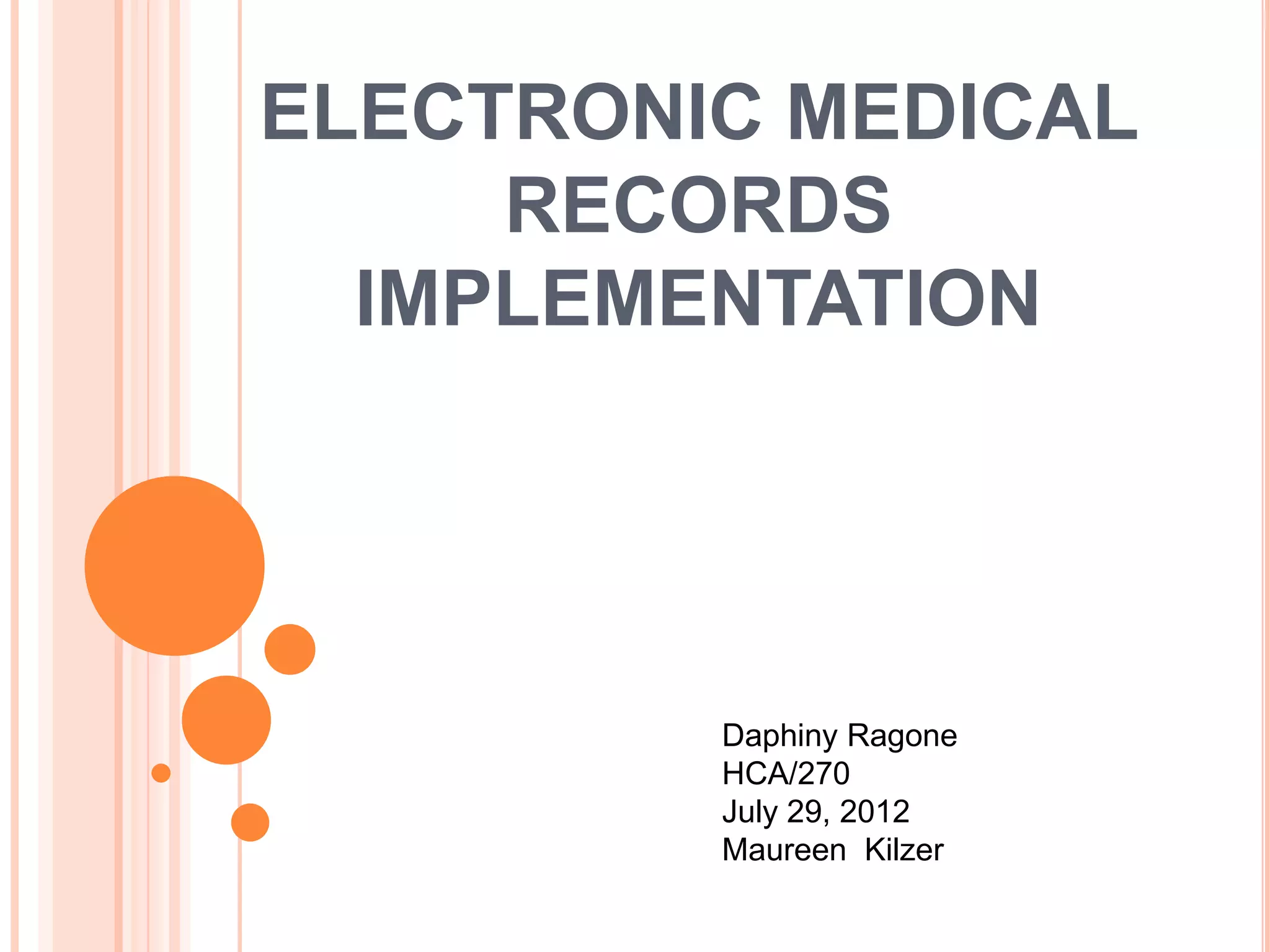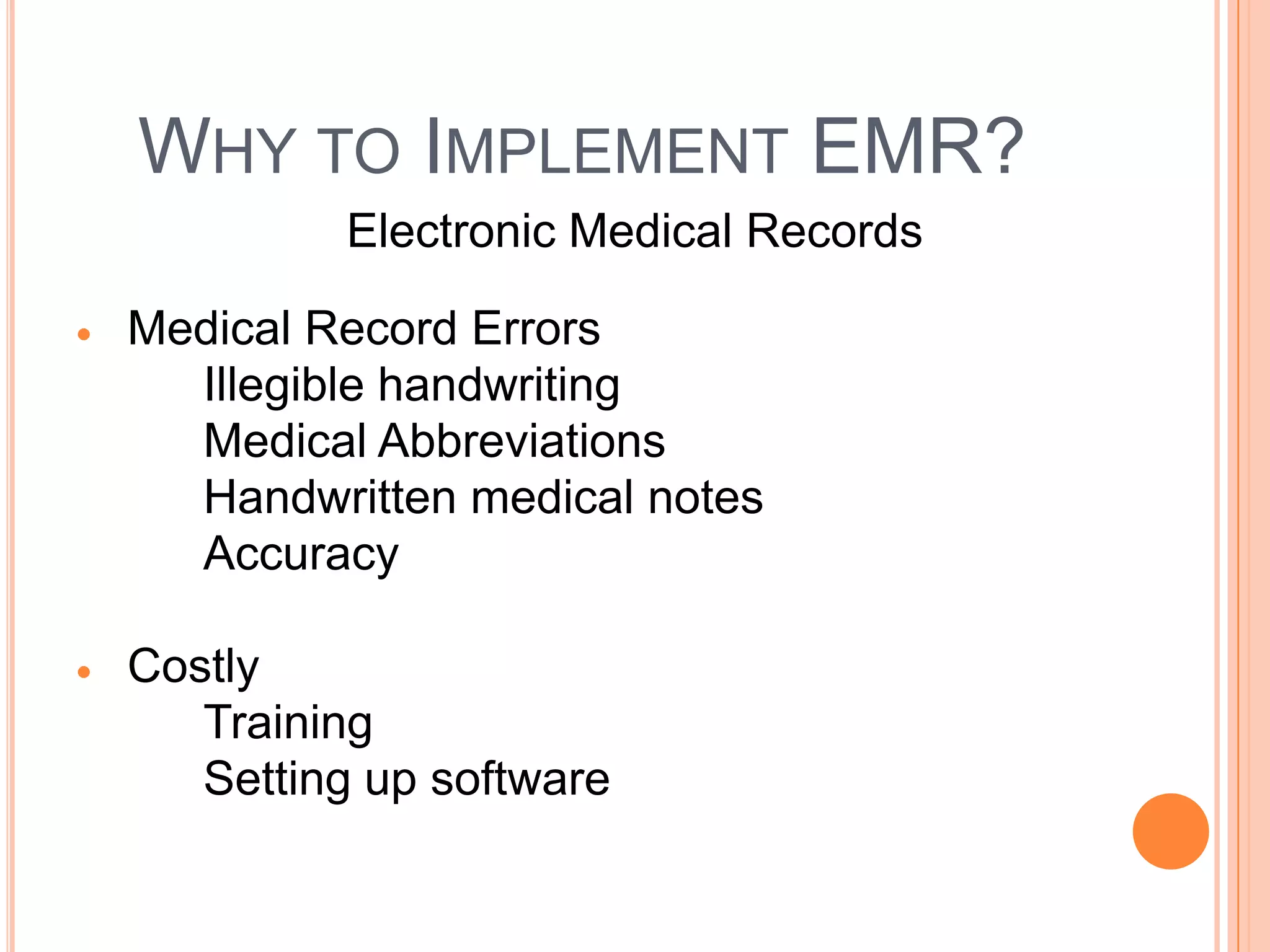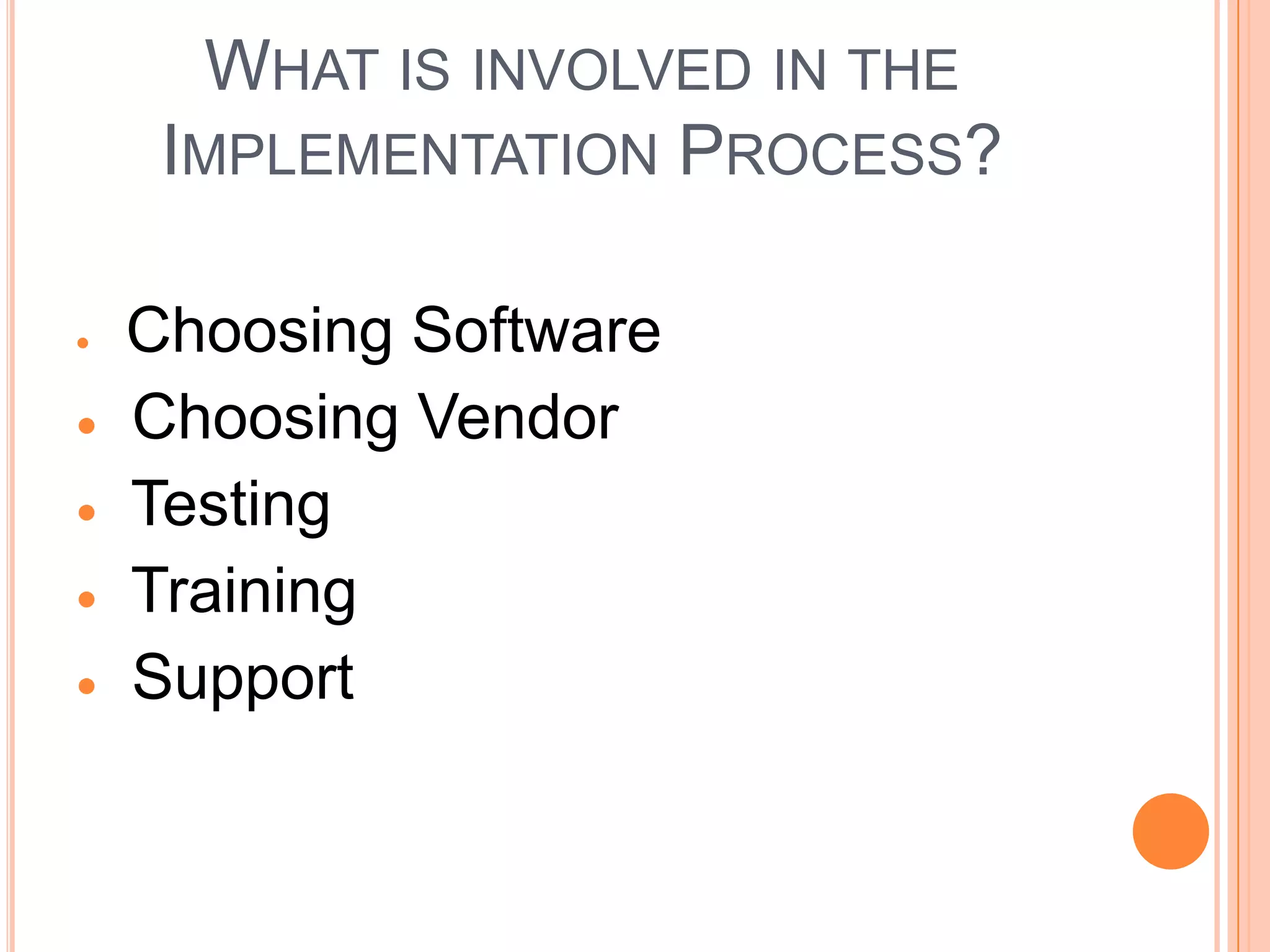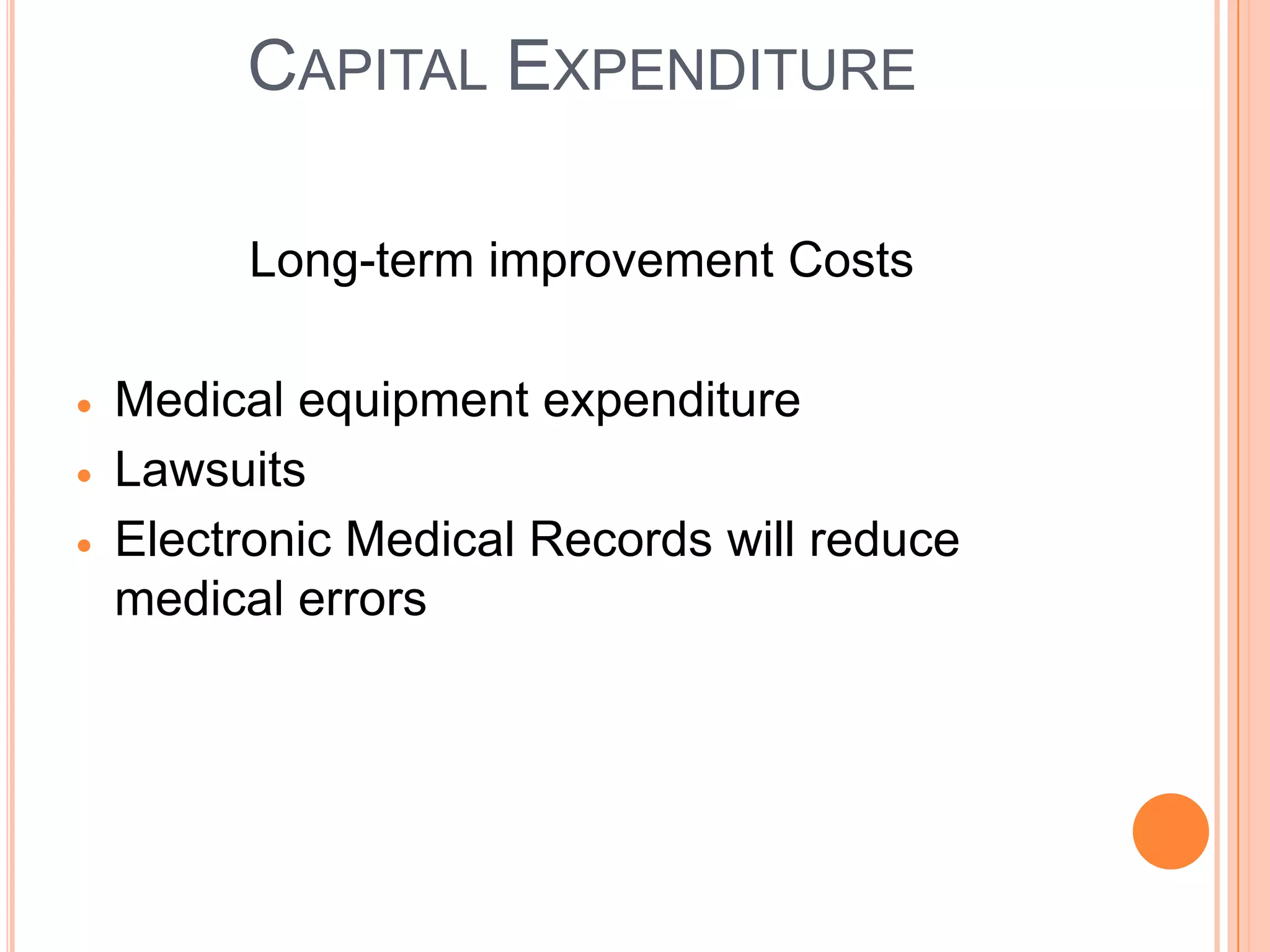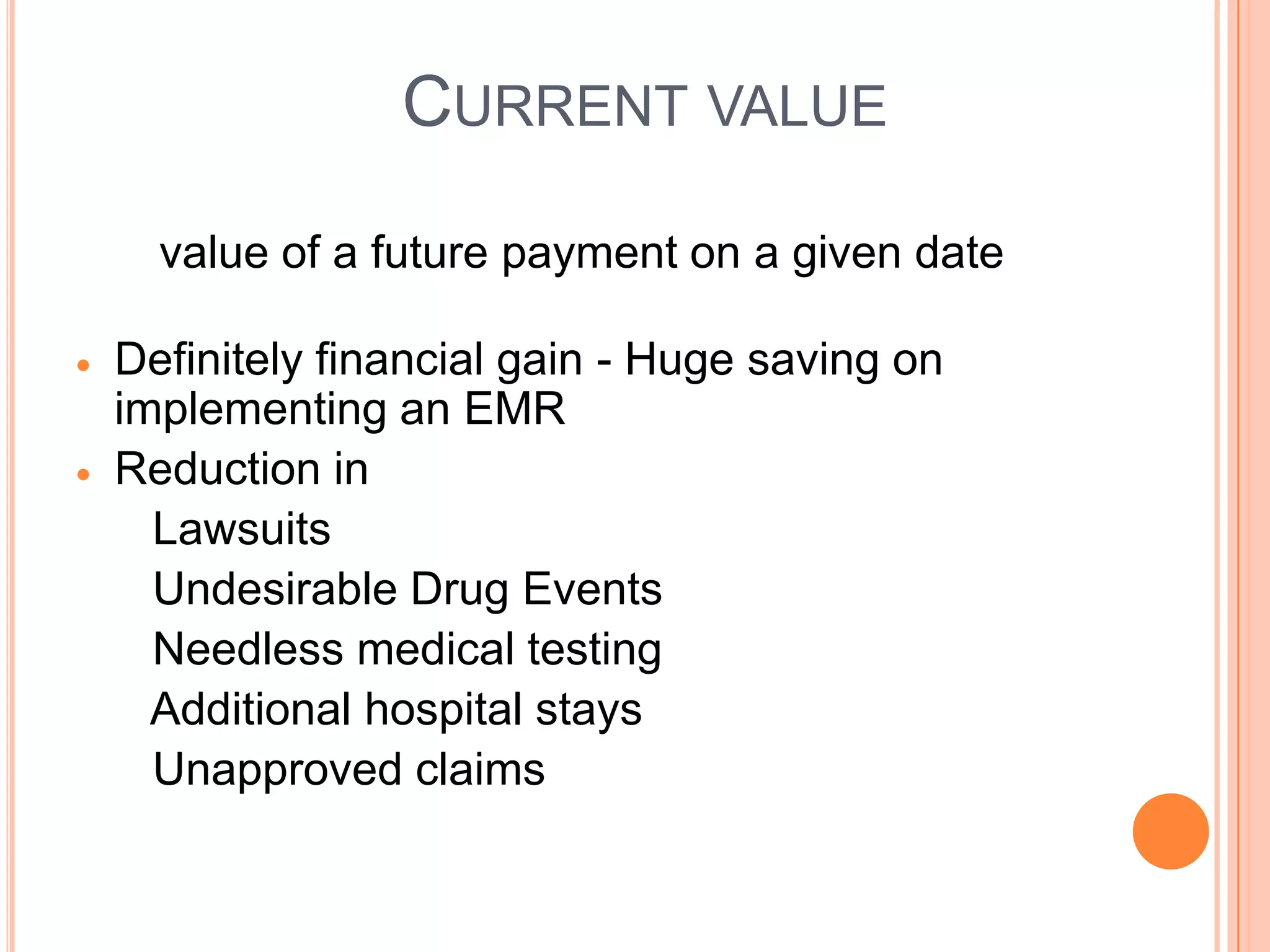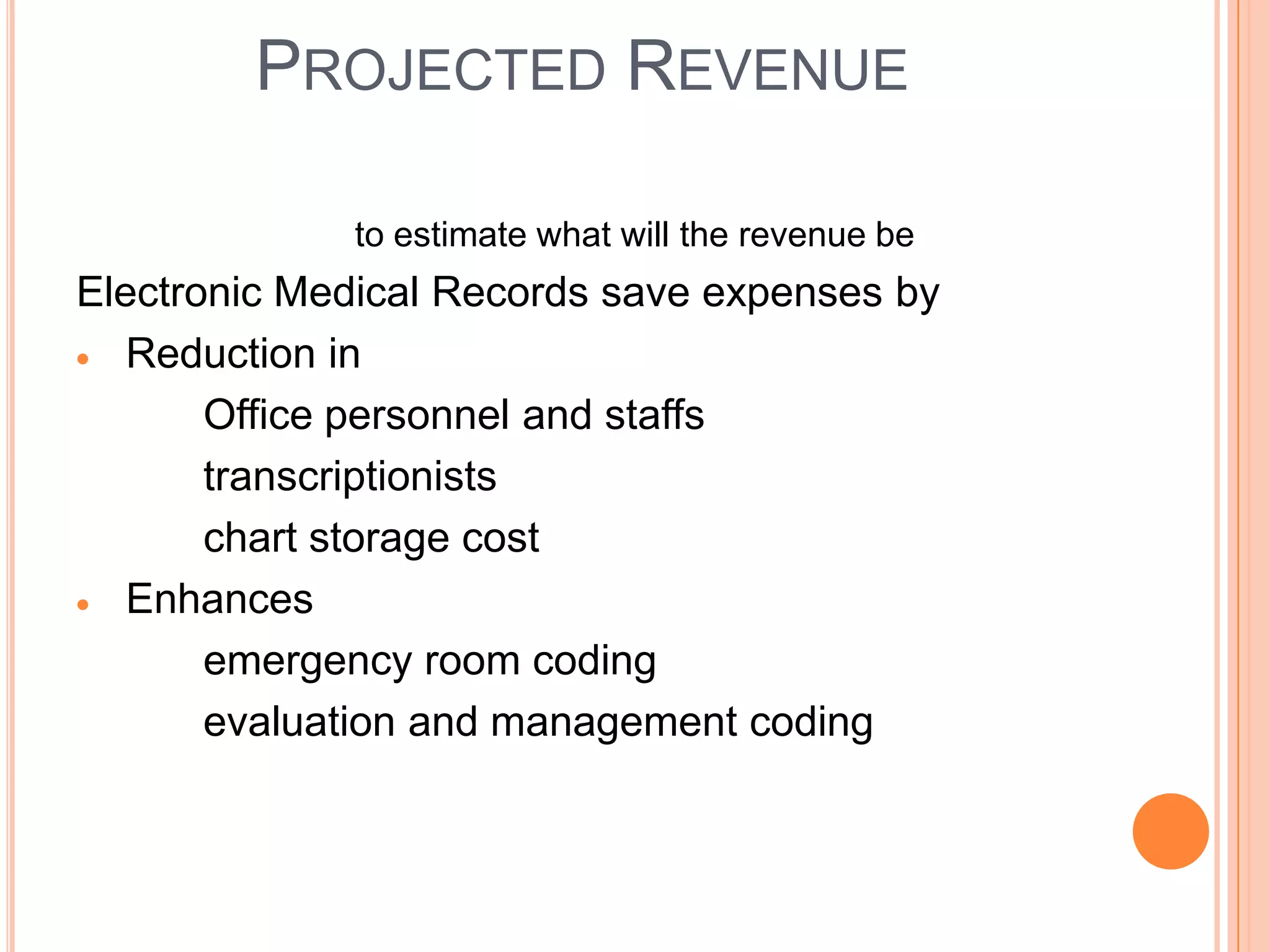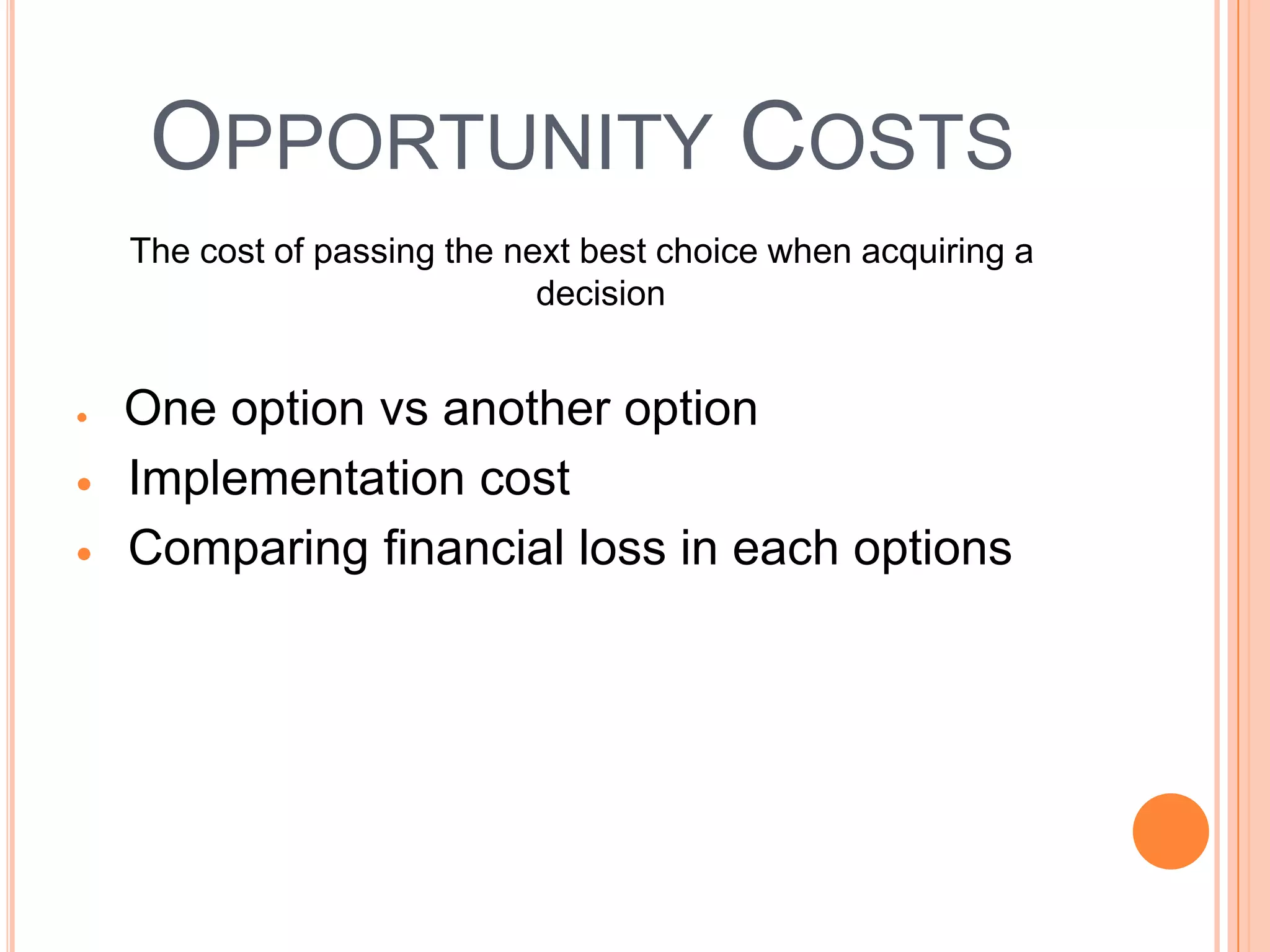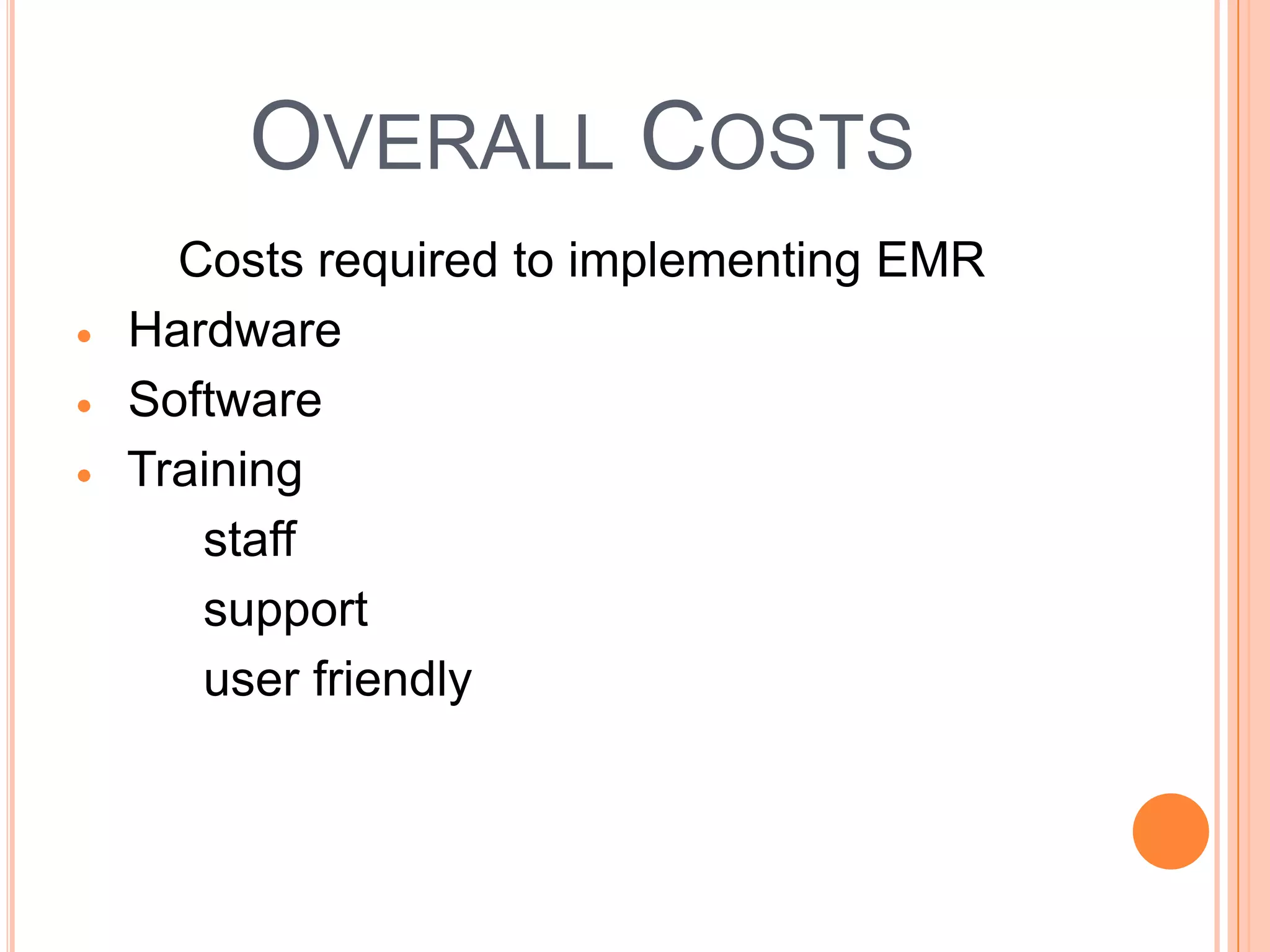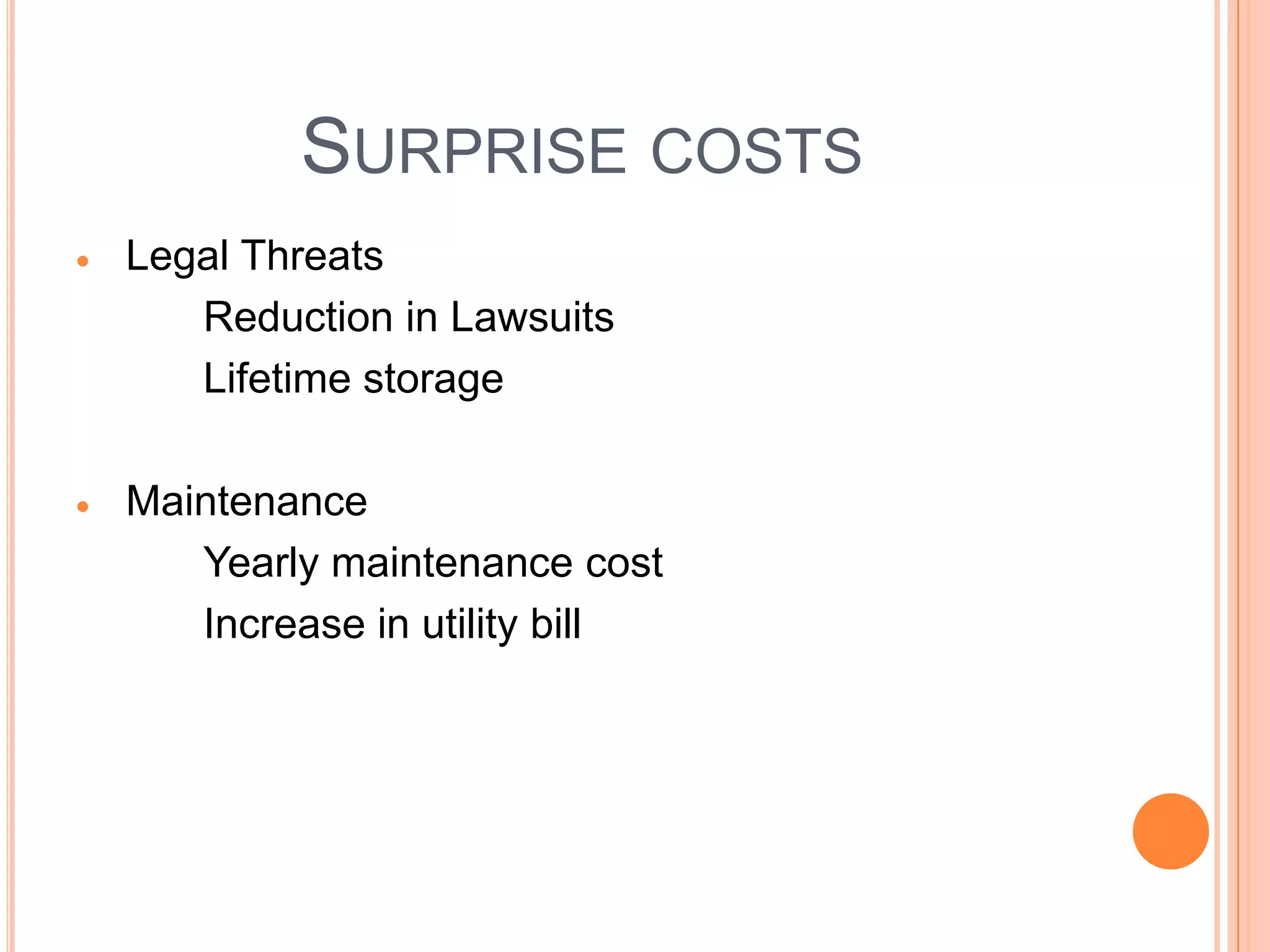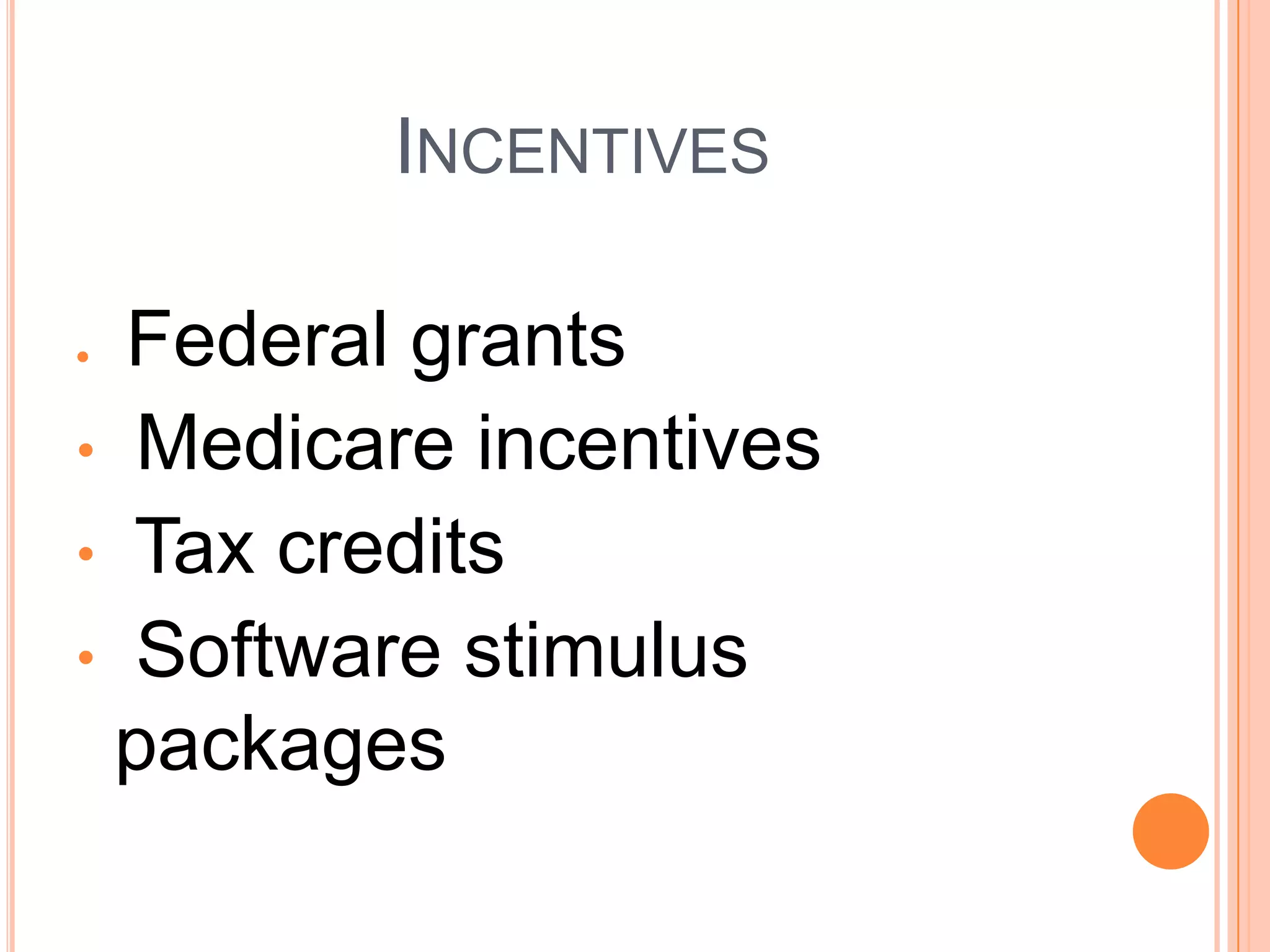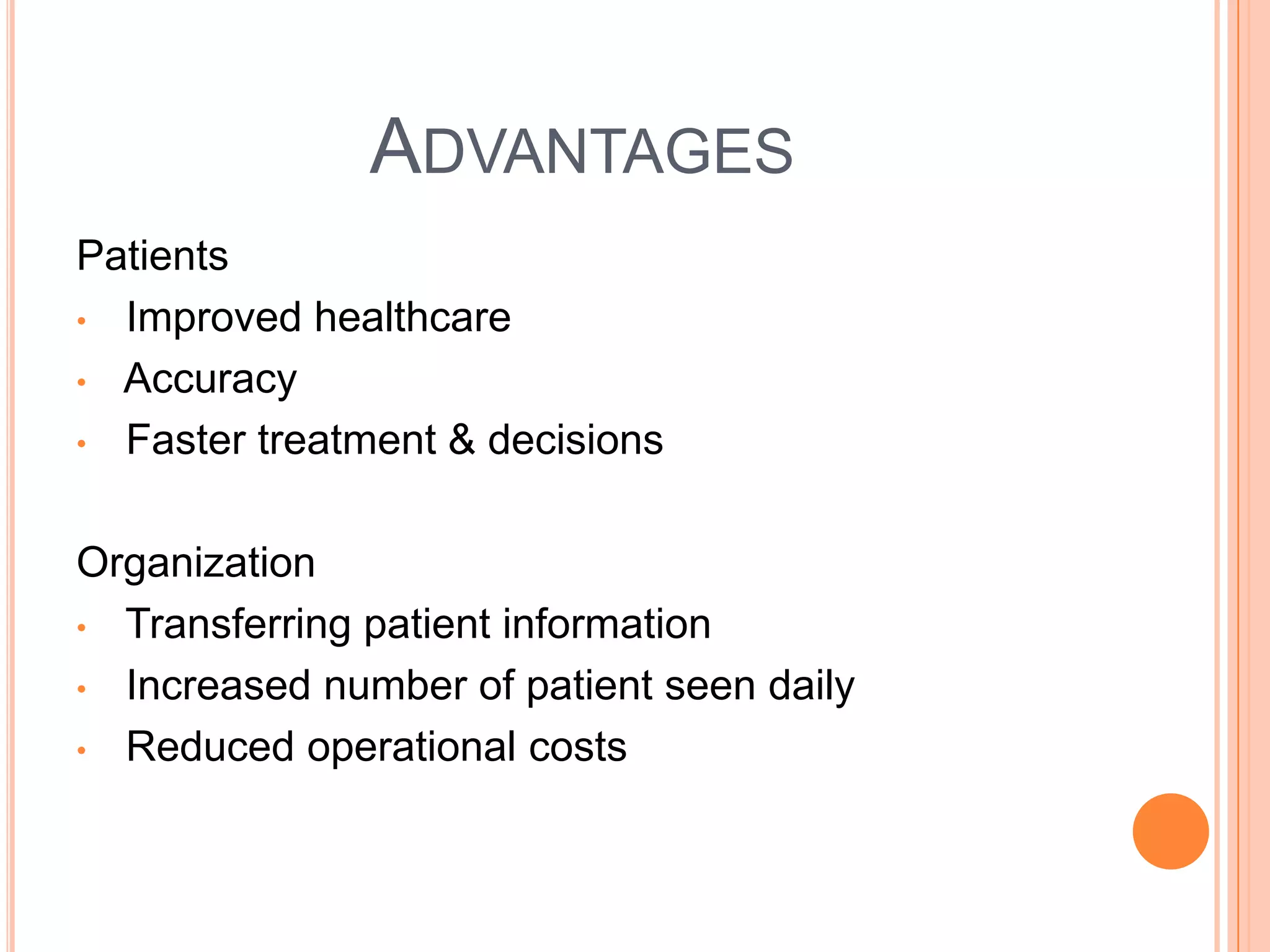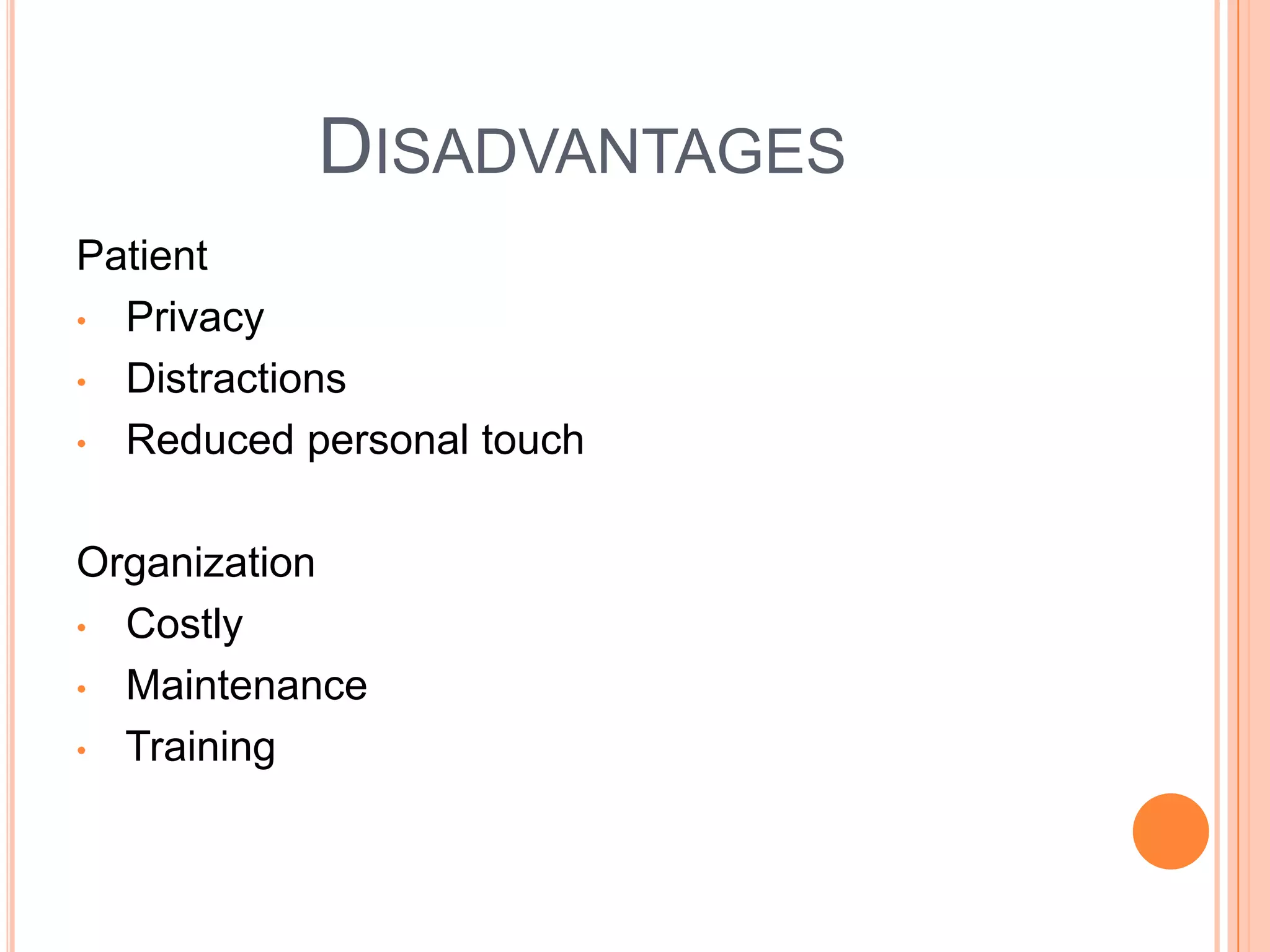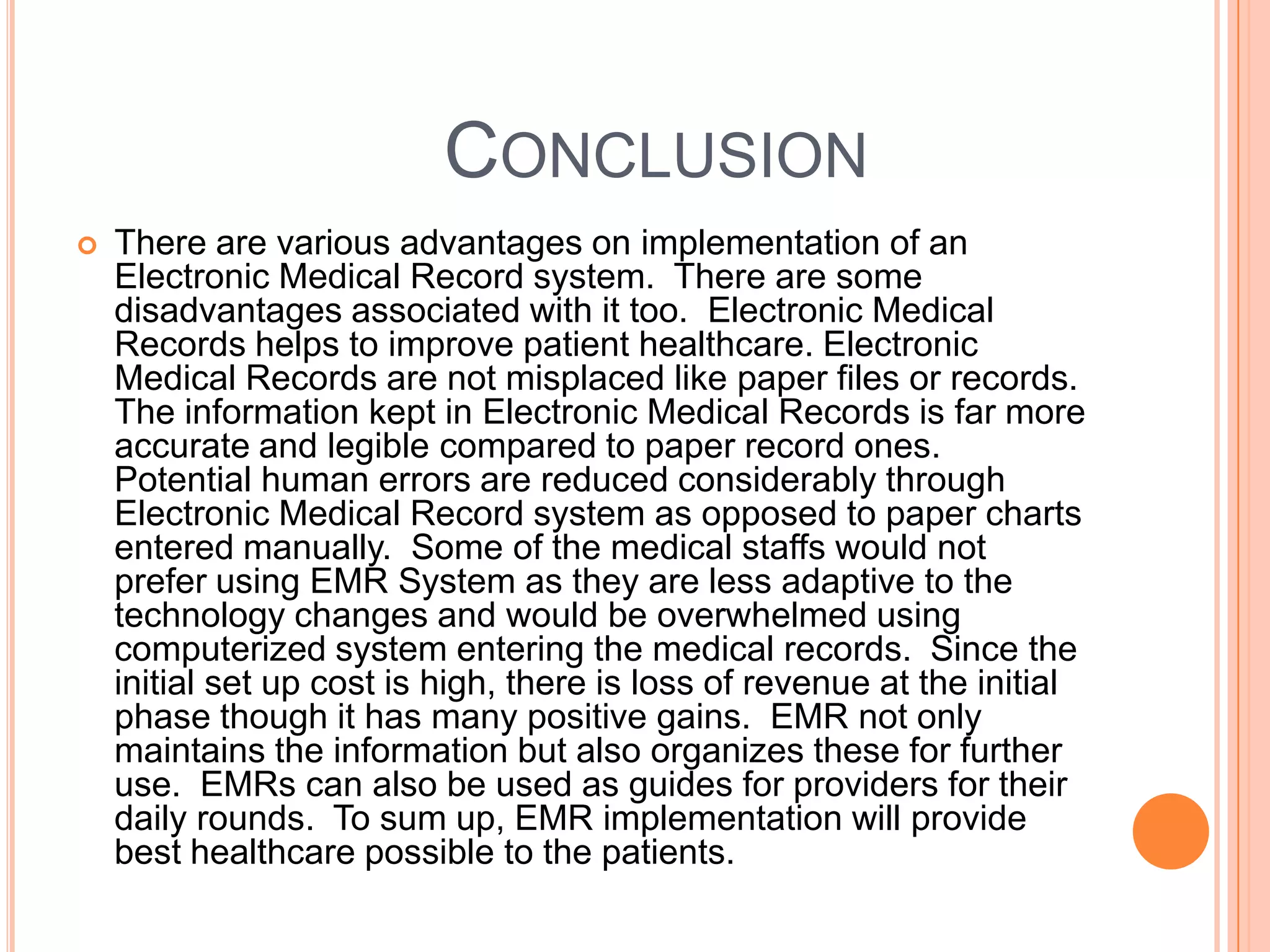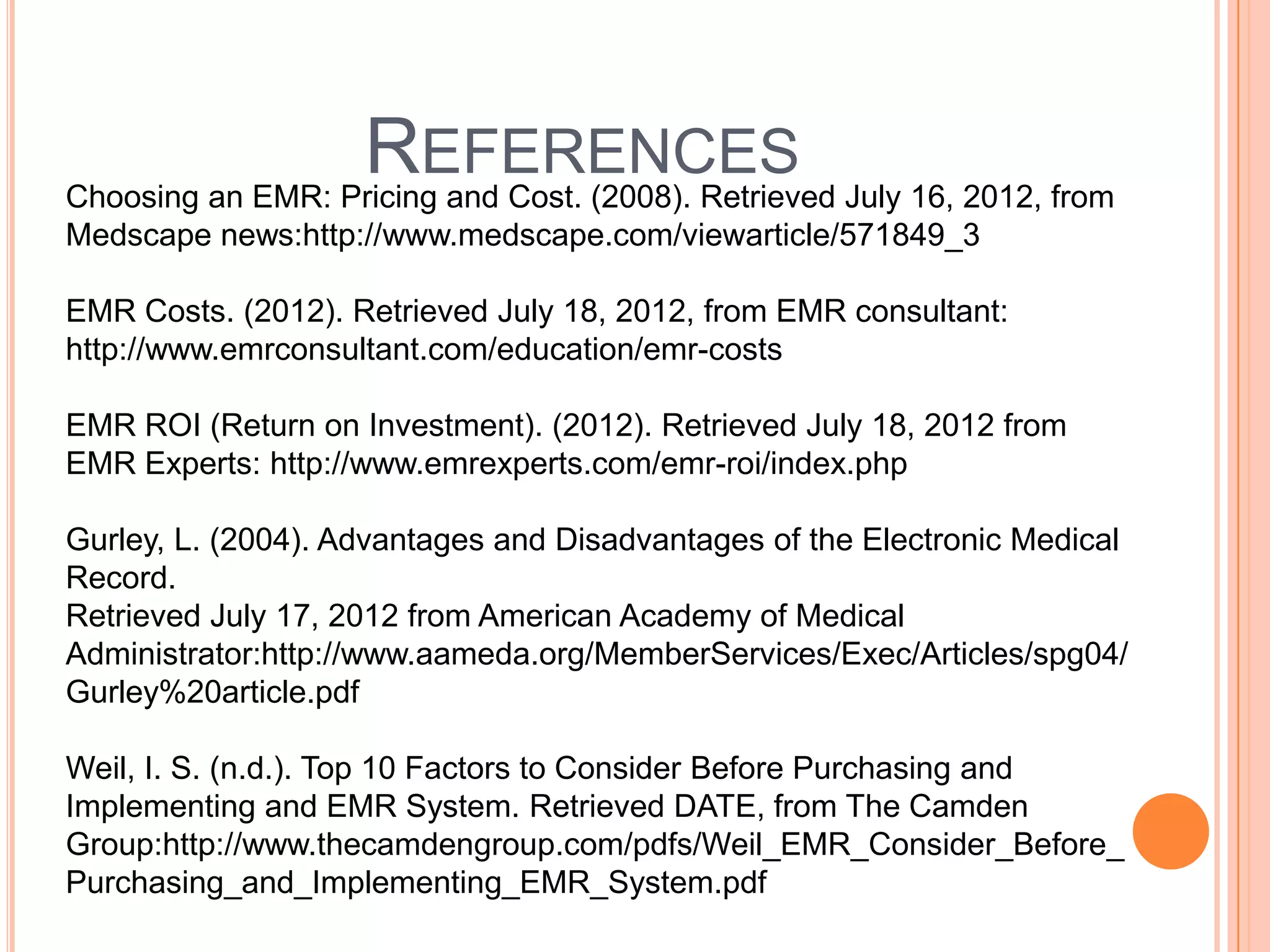This document discusses the implementation of electronic medical records (EMR). It outlines reasons to implement EMR, such as reducing medical errors from illegible handwriting and inaccurate abbreviations. The implementation process involves choosing software and a vendor, testing, and training. There are costs for equipment, lawsuits, and unnecessary medical procedures that EMR can reduce. EMR also allows for faster treatment decisions and easier transfer of patient information. While costly initially, EMR provides long-term financial benefits and improves patient healthcare overall.
